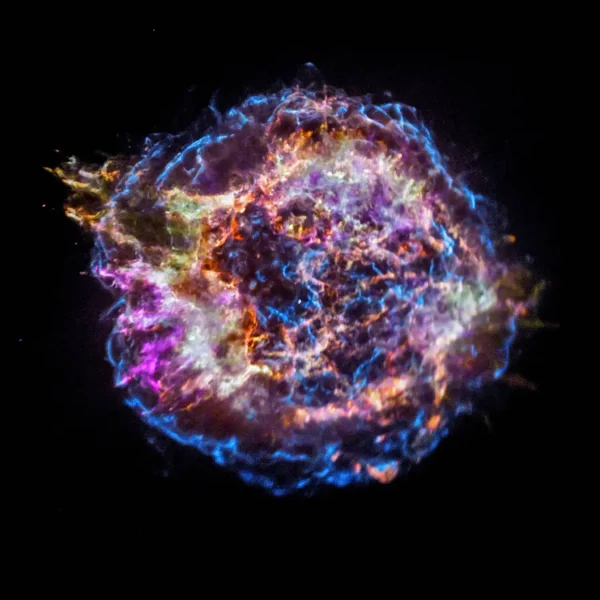
Image description: Where do most of the essential elements for life on Earth come from?
Due to its unique evolutionary status, Cassiopeia A (Cas A) is one of the most intensely studied supernova remnants. This image illustrates the process of stellar nucleosynthesis, that is, the creation of chemical elements. Credits: NASA
Stellar nucleosynthesis is the process by which stars create chemical elements from subatomic particles through nuclear reactions during their life cycle. This phenomenon is fundamental to understanding the origin of elements in the universe, as it explains how light elements like hydrogen and helium are transformed into heavier elements such as carbon, nitrogen, oxygen, neon, silicon, and ultimately iron. Stars play a crucial role in the chemical enrichment of the universe.
Nuclear fusion of atomic nuclei requires a large amount of energy due to the electrostatic repulsion force (Coulomb force) and the nuclear force that must overcome a very short barrier on the order of 1 femtometer (10^-15 meters). This requires very high speeds, and thus extremely high temperatures, to provide the necessary kinetic energy. It is in the cores of stars that this energy is found.
Primordial nucleosynthesis occurred in the first minutes after the Big Bang, where protons and neutrons combined to form light nuclei like hydrogen, helium, and traces of lithium and beryllium.
Stellar nucleosynthesis occurs mainly in the cores of stars, where temperatures (up to 1 billion degrees Celsius) and pressures are extremely high (up to 10 million times atmospheric pressure).
The creation of chemical elements by stars is a fascinating process that reveals not only the internal dynamics of stars but also the origin of the chemical diversity of our universe. The elements created in stars are not only fundamental to the composition of matter in the universe, but they also play a vital role in the formation of planets and life itself.